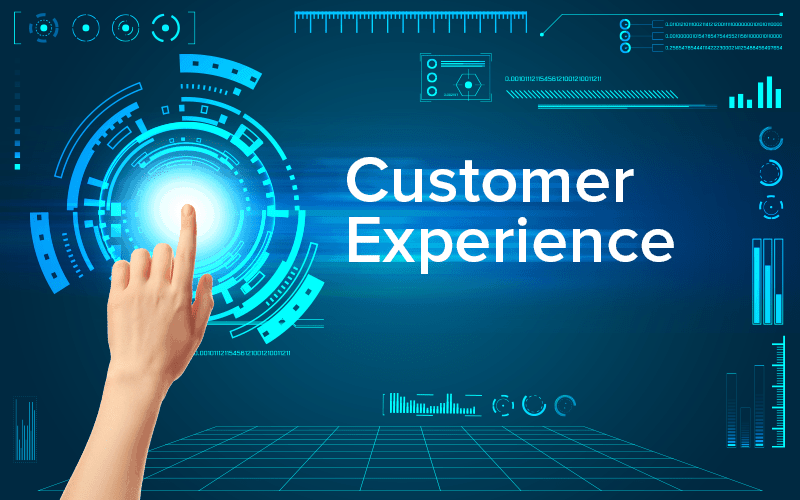When it comes to customer experience software, there are a lot of options available. With this optionality comes the ability to find a solution that not only works for your company but also fits your budget. To help you get started on shopping around, we’ve put together this list of 8 tips to keep in mind as you browse.
Choose a Vendor Partner
There are hundreds of CX vendors in the market today, but not all of them are created equal. Some offer more sophisticated features than others. Others may have better customer service support teams or be more well-established in the industry.
Before deciding on a vendor partner, choose one that best meets your needs has the right capabilities to help you achieve your goals.
Decide on Your Key Metrics.
It’s critical to decide on your key metrics before continuing. This is the data that you need to be able to measure understin order to make decisions about the customer experience strategy.
Here are some questions that will help you identify your key metrics:
- What are the most important metrics for your business?
- How will you measure them? Are there different ways of measuring each metric? What tools or resources do you have available at this time, which ones might be useful in the future as well?
- What do you want to achieve with a good customer experience strategy (or what’s missing now)? Make sure there’s alignment between these goals those of other departments within your organization, such as sales or marketing.
- Who else has a stake in these answers—the leadership team, shareholders…anyone else who might benefit from seeing them addressed successfully through an improved CX program?
Define Your Budget.
The next step in budgeting is to identify the problem you’re trying to solve. You need to ask yourself what it is that’s keeping your business from engaging with your customers as effectively as possible. Once you’ve defined this, it will be easier for you to determine how much money you can afford to spend on customer experience software services.
Get the Right Tool for the Right Job — Learn to Walk Away.

- Get the right tool for the right job or take customer references— learn to walk away.
- Know what your needs are, know how much you can afford.
- Don’t get caught up in all the bells whistles of something that doesn’t meet your needs or budget.
- Be sure you know what you need to know about the software, such as: – Is it out-of-the-box or custom? – What kind of support does it offer? – Are there any special features that would add value to your business? – How easy is it to use, especially if it’s a web application or mobile app?
Ask for the Right Things When It Comes To Customer Experience Software Free Trials.
Ask for the right things when it comes to customer engagement software free trials.
You know what you want from your customer experience software, but do you know what your vendor wants from you? The following are some questions to ask during a free trial:
- What does this product offer that’s unique?
- Is the product easy to use for my team—will it be easy for our customers to use as well? (i.e., How much training will we need prior to rolling out the solution across our company?)
- Does this solution work with my current systems processes, or is there something we’ll need to change in order for it all to work together seamlessly?
Make Your Team Part of the Research Buying Process.
- Make your team part of the research, customer case studies, buying process.
- Get a diverse group of people involved.
- Make sure everyone is committed to the process, on board with the goals you’ve laid out together as a team before they begin any research or evaluation processes, so they know exactly what they’re looking for as they go forward in their own studies/purchases/etc., how that relates back to what you’re trying to achieve as an organization (i.e., why are we doing this?).
Figure Out What Customer Data You Have, What You Need, And How You Can Get Access To It.
In the next step, you’ll want to figure out what customer data you have what kind of customer data could be helpful for your CRM system. You can get this information from your current CRM system or by interviewing customers.
A few questions to consider:
- What are the names, email addresses, phone numbers of all your customers?
- Do they have any other information like purchase history or demographics (age/gender)?
Think Beyond the First Purchase.
- Think beyond the first purchase. Asking yourself “why” when choosing a CRM is an important first step in ensuring you’re getting the right solution for your business. But it’s also critical to think about how you’ll use it after that purchase—how much value you can derive from it over time.
- Don’t forget about reporting analytics. Having access to data is great, but if there’s no mechanism in place for pulling insights from that data, then what’s the point? The best customer experience software will let you dig into your customers’ behaviors in order to make better business decisions down the road. Also, make sure the software includes all VOC Programs.
Final Words
With the right research planning, buying customer experience software can be a breeze. Make your buying process smooth by following these steps you’ll have customers singing your praises before you know it.




